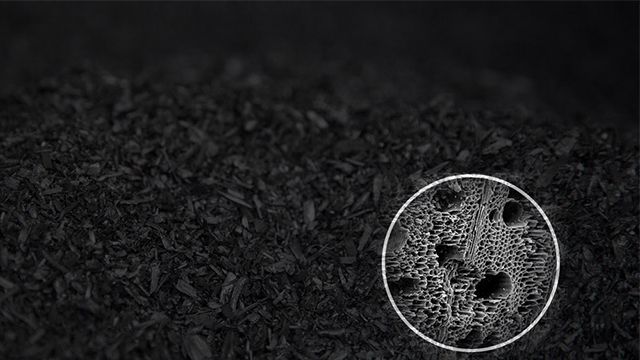Strategies to Improve H/C Ratio in Biochar Production
- By Beston Charcoal
- •
- 17 Dec, 2024
- •

Biochar production is gaining prominence as a sustainable solution for carbon sequestration, soil enhancement, and waste management. A critical factor influencing the quality and performance of biochar is the hydrogen-to-carbon (H/C) ratio. This parameter reflects the degree of carbonization and the stability of biochar, making it an essential metric in determining its utility for various applications. Optimizing the H/C ratio ensures biochar exhibits superior structural properties and long-term environmental benefits.
Understanding the H/C Ratio in Biochar
The H/C ratio represents the proportion of hydrogen to carbon atoms in biochar. A lower H/C ratio indicates a higher degree of carbonization, which translates to greater thermal stability and resistance to microbial degradation. Typically, biochar with an H/C ratio below 0.7 is considered stable and suitable for long-term carbon sequestration. Conversely, a higher ratio suggests incomplete pyrolysis, resulting in biochar with reduced durability and performance.
Several factors influence the H/C ratio during biochar production, including feedstock composition, pyrolysis temperature, residence time, and the operation of a biochar machine. By optimizing these variables, producers can achieve biochar with desirable properties tailored to specific applications.
Key Factors Affecting the H/C Ratio
1. Feedstock Selection
The choice of feedstock significantly impacts the chemical composition and H/C ratio of biochar. Biomass with high lignin content, such as hardwoods, generally produces biochar with lower H/C ratios due to its structural complexity and higher carbon concentration. In contrast, feedstocks rich in cellulose and hemicellulose, like agricultural residues, may yield biochar with relatively higher H/C ratios.
To improve the H/C ratio, selecting lignin-dense feedstocks or blending multiple biomass types can enhance carbonization efficiency. Proper pretreatment, such as drying and size reduction, further ensures uniform feedstock characteristics for optimal pyrolysis.
2. Pyrolysis Temperature
Temperature is a pivotal factor in determining the extent of carbonization during biochar production. Higher pyrolysis temperatures (typically above 500°C) facilitate greater thermal decomposition of volatile organic compounds, resulting in biochar with a lower H/C ratio. At elevated temperatures, hydrogen-rich compounds are volatilized, leaving behind a carbon-dense structure.
Producers can regulate the temperature in a biochar pyrolysis machine to achieve the desired H/C ratio. For instance, slow pyrolysis at 600°C to 700°C often yields biochar with optimal stability for long-term applications. However, excessively high temperatures may reduce biochar yield and alter its porosity, requiring careful control of process parameters.
3. Residence Time
The duration of pyrolysis, or residence time, influences the degree of thermal decomposition and the H/C ratio. Extended residence times allow for more thorough removal of volatile matter, promoting the formation of carbon-rich biochar. However, prolonged heating can also increase energy consumption and operational costs.
Balancing residence time with temperature is essential to maximize carbonization efficiency. For instance, operating a biochar machine at moderate temperatures with slightly longer residence times can achieve lower H/C ratios without compromising biochar yield.
4. Heating Rate
The heating rate during pyrolysis affects the breakdown of biomass and the resulting H/C ratio. A slower heating rate ensures gradual thermal decomposition, allowing sufficient time for volatile matter to escape and carbon-rich biochar to form. Rapid heating, on the other hand, may trap hydrogen-rich compounds within the biochar matrix, increasing the H/C ratio.
Optimizing the heating rate in a biochar machine enhances process control and ensures the production of high-quality biochar with favorable chemical properties.
Techniques to Improve the H/C Ratio
1. Advanced Pretreatment Methods
Pretreatment techniques, such as torrefaction and hydrothermal carbonization, can enhance feedstock properties prior to pyrolysis. These methods reduce moisture content and partially decompose biomass, facilitating more efficient carbonization during biochar production.
2. Gas Environment Control
Modifying the pyrolysis atmosphere can influence the chemical composition of biochar. For example, introducing inert gases like nitrogen or reducing gases like hydrogen can promote the removal of volatile compounds, leading to a lower H/C ratio. Modern biochar machines equipped with gas flow controls allow precise management of pyrolysis conditions.
3. Process Optimization with Biochar Machines
State-of-the-art biochar machines offer advanced features for temperature regulation, residence time adjustment, and gas recovery. By integrating automated controls, producers can fine-tune pyrolysis parameters to achieve biochar with optimal H/C ratios. Continuous monitoring and real-time adjustments further enhance process efficiency and product consistency.
Benefits of Lower H/C Ratio Biochar
Biochar with a lower H/C ratio exhibits several advantages, including:
- Enhanced Stability: Lower H/C ratios indicate higher resistance to microbial decomposition, making biochar ideal for long-term carbon sequestration.
- Improved Soil Amendment: Stable biochar provides better soil structure and nutrient retention, supporting agricultural productivity.
- Reduced Environmental Impact: Optimized biochar production minimizes greenhouse gas emissions and enhances resource utilization.
Conclusion
Improving the H/C ratio in biochar production requires a holistic approach that integrates feedstock selection, pyrolysis optimization, and advanced process control. By leveraging efficient biochar machines and fine-tuning key parameters like temperature, residence time, and heating rate, producers can achieve biochar with superior chemical stability and environmental benefits. As biochar continues to play a vital role in sustainable development, optimizing its production ensures long-term viability and performance across diverse applications.
